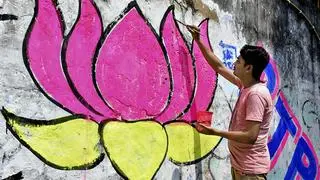The government of India facilitates State governments to reduce agricultural costs through many Centrally-sponsored and Central-sector schemes. However, the latest data available for six major schemes for the last five years show that the actual expenditure on these schemes has remained low compared to Budget estimates.
Farmers have been complaining that the schemes are not reaching them. The data show that even the available Budget estimates remain on paper with low actual expenditure.
The Ministry of Agriculture and Farmers Welfare launched a Sub-Mission on Agricultural Mechanisation (SMAM) in 2014-15 with the objective of increasing the reach of farm mechanisation to small and marginal farmers and to the regions and difficult areas where farm power availability is low. In the five years ( 2017-18 to 2021-22), the total Budget estimate has been ₹4,765.29 crore while the actual total expenditure has remained ₹4,079.27 crore (86 per cent), which is the highest compared to actual expenditures in the other five schemes.

Major schemes
Pradhan Mantri Krishi Sinchayee Yojana (PMKSY) initiated in 2015 with an aim to enhance physical access of water on farms and expand cultivable areas under assured irrigation, improve on-farm water use efficiency, etc has received the highest Budget estimates during the five years compared to other five schemes. With Budget estimates of ₹18,900 crore, the actual expenditure on this scheme in five years is just ₹11,732.76, or 62 per cent of the Budget estimates.
The National Project on Management of Soil Health and Fertility is one of the oldest schemes launched to promote soil test-based balanced and judicious use of fertilizers. However, not even 50 per cent of the total Budget estimate in the five years has been utilised.
Sub-Mission on Seeds and Planting Materials launched to produce and supply quality seeds to farmers to enhance production and productivity through various components has received the lowest Budget estimates compared to other schemes. The total Budget estimate for the scheme in the five years is ₹1,738.9 crore while the actual expenditure is ₹1,340.43 crore.
Who benefits?
Have these schemes reduced the cost of agriculture per hectare and increased farmers’ income? The Ministry of Agriculture told the Lok Sabha this week that a comprehensive study regarding these issues is not available. However, the Ministry cited some studies reflecting the benefits of the schemes.
“These schemes were supposed to reduce the cost of agriculture. But the ground reality is different. The cost of agriculture is only rising,” said farmer Sayaji Mane from Sangli.
“The major problem with the government scheme is that it benefits only particular farmers and hardly reaches those who deserve it,” says farmer Vidya More from Osmanabad. She added that information on government schemes comes to a selected few and most of these farmers are relatives of government babus. “You will find that selected households in villages will have all government schemes, but others in the village might not be even aware of it,” she added.








Comments
Comments have to be in English, and in full sentences. They cannot be abusive or personal. Please abide by our community guidelines for posting your comments.
We have migrated to a new commenting platform. If you are already a registered user of TheHindu Businessline and logged in, you may continue to engage with our articles. If you do not have an account please register and login to post comments. Users can access their older comments by logging into their accounts on Vuukle.